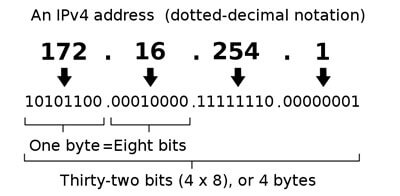Introduction to IP Addresses
Some people have already an idea about IP addresses while others have no clue what is it all about and why many people keep referring to it. This article would provide you some information about the IPs and their overall purpose without getting too techy. Keep reading till the very end to find out more about it.
What is IP Address?
IP stands for Internet Protocol. Every machine has its own unique identity on a network and that is what it is for (mainly). It assigns a unique identifying numerical label to every machine that is on any computer network that utilizes Internet Protocol for communications. You can think of it as a unique identity every citizen of a country has to differentiate among them, except in this case IP is used to differentiate among different devices that are on any computer network.
Purpose
Apart from giving a unique numerical identity to every device, IP address also serves two other purposes. Firstly, it identifies the host or the network interface and secondly, it addresses the location. So, overall it has three major purposes. However, the role of IP is to know what we are looking for through the name, whereas the address tells us about the whereabouts and the route gives us an idea how to get there.
What Does It Look Like?
IP address is nothing but a set of binary numbers that although, are stored in text files are still displayed in a manner that easily readable for humans. A common example of an IP would be 192.168.1.65 (for IPv4) but IPv6 looks quite different and this is how it looks: 2001:0db8:85a3:08d3:1319:8a2e:0370:7334.
Normally they are the numbers which are between 0-255. You can always find your computer’s IP by searching on the internet as there are many websites that would provide you details related to your IP address such as your country, city and even the ISP depending upon the website you use.
Different Versions
In the beginning there was only Internet Protocol Version 4 (IPv4). However, the advancement and increasing requirement for communications lead to Internet Protocol Version 6 (IPv6). In general, when people are talking about IP they are referring to IPv4 as it’s still the most commonly used one. IPv6 uses 128 bit numbers whereas the IPv4 uses 32 bit numbers.
Different Types
The above entry was about different versions, this entry would discuss the different types of IP addresses. These type are static and dynamic. A static IP can be configured in your computer by editing the network settings. However, static IPs are not really common and if they are not configured properly they can create some problems for you. The other type of IP is Dynamic. This is commonly used all around the world. Dynamic IP is allocated by Dynamic Host Configuration Protocol (DHCP) and normally runs on network hardware like routers or dedicated DHCP servers.
So, this is pretty much the basic information you need regarding IP addresses.
For more details on What is My IP Address [http://websitestatschecker.com] and to find your own IP address visit WebsiteStatsChecker.com [http://websitestatschecker.com].
Article Source: http://EzineArticles.com/8187656

